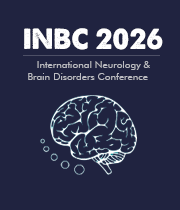Title : Paroxysmal dyskinesia: Unraveling the complexities of a rare movement disorder
Abstract:
Paroxysmal Dyskinesia (PD) stands as a rare and heterogenous group of movement disorders represented by sudden, involuntary movements. The Term “Paroxysmal” means it appears instantaneously, and the term “Dyskinesia” means movements of the Body that are involuntary. This Presentation explores intricate sides of Paroxysmal Dyskinesia, the avatar of PD, intrinsic case vignette, surrounding clinical features, diagnostic methods, and current treatment approaches. Important Differential Diagnosis of PD includes episodic ataxia, juvenile myoclonic epilepsy, and nocturnal frontal lobe epilepsy. The main goal is to acknowledge distinct types of PD and their respective types like Paroxysmal kinesigenic Dyskinesia, Paroxysmal non-kinesigenic Dyskinesia and Paroxysmal exercise-induced Dyskinesia. Genetics plays a vital Role in PD Etiology. PRRT2 which stands for Proline-rich transmembrane Protein 2 accounts for most cases of PD. Currently, the abnormal Basal ganglia-thalamic-cortical circuit is related to the Pathophysiology basis of Paroxysmal Dyskinesia. Clinical features of PD relied on their types. Onset occurs before age 18, although later onset is possible. PEDs stands for Paroxysmal Exercise-induced Dyskinesia, induced by vigorous jerky movements or sometimes under emotional influence. In Neurology the Term “AURA” used in migraine attacks is also applied here as person starts to feel nauseated or anxious before PD attacks. It could be Unilateral or Bilateral. Limbs are commonly involved, but the face, neck and trunk may also be affected. Even sudden sound or Anxiety may lead to attack of PD. Consciousness is preserved and attacks last less than 1 minute, although they can go longer in different individuals. The frequency of attacks is wavering from about 50 per day to less than 2 per month. Diagnosis is Clinical based on all the core symptoms of PD and Specific Gene testing. Neurophysiological assessment, Head MRI, and other Tests like EEG and strong Familial background suggests Paroxysmal Dyskinesia. Treatment relies upon Pharmacotherapy and Psychotherapy. Treatment with Anticonvulsants like Carbamazepine and Oxcarbazepine reported complete or partial relief of attacks. The initial dose ranges between 50- 60 mg and can be adjusted. The Rarity of PD, coupled with its diverse presentation, underscores the need for heightened awareness among clinicians. Additionally, the impact of PD on individuals' quality of life causes a holistic, multidisciplinary approach to care, addressing not only the motor symptoms but also the psychological aspects.




